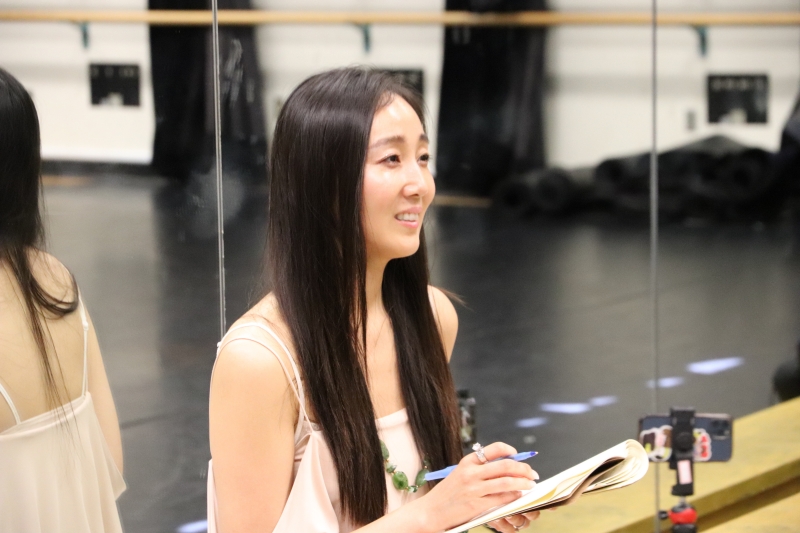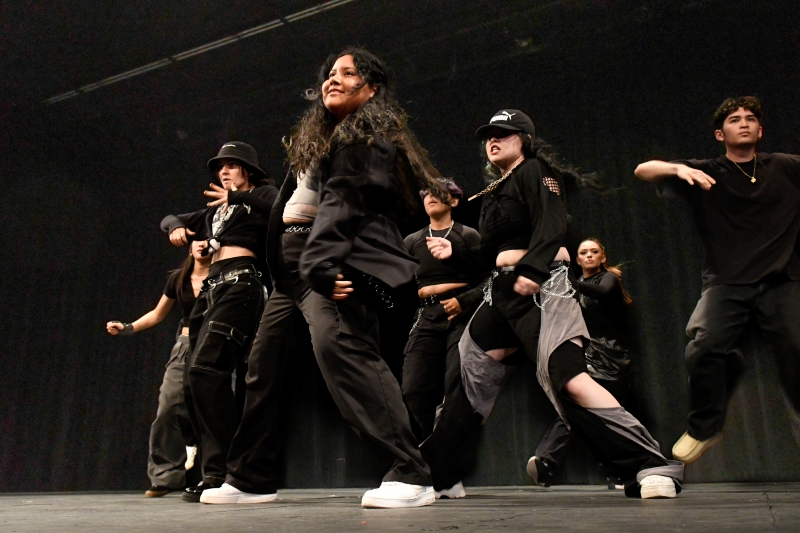
In July, the Korea Customs Service released trade statistics saying the export volume of K-pop albums in the first half of the year rose 17.1% from last year to a record-high USD 132.93 million.
K-pop's most remarkable feat, however, is the genre's growth in the U.S., whose music market is the world's largest.
With K-pop album imports of USD 25.51 million, the U.S. this year is second only to Japan (USD 48.52 million) in the K-pop market and surpasses China, which had held the runner-up spot every year since 2012 except for 2020.
A wider variety of K-pop artists this year have further grown in prominence. "Like Crazy," the solo track by BTS member Jimin, topped the Billboard 100 main singles chart and BLACKPINK won two MTV Video Music Awards. TOMORROW X TOGETHER aka TXT, Stray Kids and NewJeans have also each topped the Billboard 200 main albums chart.
As K-pop's influence grows day by day, San Diego State University (SDSU) is the first school in North America to offer courses on K-pop dance theory and history. The person who took the lead in setting up such classes in their opening semester this fall is Oh Chuyun, an associate professor of dance theory and practice at the university.
Majoring in dance at Ewha Womans University in Seoul and earning her Ph.D. from the University of Texas-Austin with the first dissertation on K-pop dance in North America, she teaches dance majors at SDSU.
Her book "K-pop Dance: Fandoming Yourself on Social Media" quickly became an Amazon bestseller after its release in July last year. Oh has also written academic papers on K-pop over the past decade and runs Oniz Lab, a think tank that issues "K-pop creator certificates."
As a leading voice to promote the genre in the U.S., the professor said K-pop is "not something made in a short period of time but stems from education and arts made over generations."
The following are excerpts from Korea.net's written interview on Sept. 26 with Oh on how she is promoting K-pop.

Oh Chuyun is a professor of dance theory and practice at San Diego State University.
You teach K-pop dance theory and history at SDSU. Why did you propose such courses?
Considering the scale of K-pop dance fandom, I had suggested this to the school since being hired in 2017.
In the U.S., almost all colleges, especially in California, where cultural diversity is deeply rooted, have K-pop cover dance teams. This is big enough to rival cheerleading squads or hip-hop crews. Practical administrative work for the courses began with the publication last year of my book "K-pop Dance: Fandoming Yourself on Social Media."
This was because of the need for textbooks and verification of academic meanings for new course topics to teach large classes on theoretical subjects. College education must reflect the new and ever-changing interests of students as well as teach traditional academics, so we decided to open a K-pop curriculum.
How tough was it to include K-pop dance in the curriculum of an American university?
First, the biggest criticism was that it wasn't "canon." Any country has tends to emphasize its own culture or the traditions of vested interests.
Though the U.S. is a multicultural country because its history of colonialism, Caucasian-centric traditions are strong. K-pop suffered a double whammy because it's pop dance rather than a theater art and a dance of Asian culture rather than white.
How are the courses taught and what has been the reactions of students?
Students use "K-pop Dance: Fandoming Yourself on Social Media" as the textbook for the semester to learn about the history of K-pop dance and the cultural meaning of dance fandom. In addition to a theory course, 80 students early in the semester organized a showcase and handled dancing, lighting and costume design, and music. In mid-semester, students will gain practical and creative experience through "K-pop Dance Challenge" assignments to enhance their understanding of K-pop dance.
We have 80 students in the courses, which were so popular that dozens were put on the waiting list. The capacity of the largest classroom is 80, so we had to limit the number of students.
Students enjoy just watching K-pop music videos during class and most of all, they're fascinated by the hidden stories I tell them on growing up in Korea watching the first generation of K-pop acts.
For instance, I imitated the makeup and clothes of the girl group SES in middle school and performed cheerleading dances at school sports events. I also explained my desire to become like SES through dance and how the imitation process affected my teenage years.
On the other hand, students struggle with many Korean names or words. Fans are familiar with aegyo (cute display of affection), the finger heart gesture and the names of famous acts but most struggle with pronunciation.
Your students performed at a showcase early last month. Though enrolled in a class on K-pop dance theory, it seems you're offering them the chance to directly try such dance.
I think K-pop dance is like cooking. You can see many cooking photos or videos on Instagram or YouTube, but if you don't do it yourself, it'll be hard to make that knowledge yours.
Similarly, most American students are exposed to short clips of K-pop on social media that last just a few seconds. In actuality, students who perform experience the real meaning of dance through recognition of the importance of teamwork, the need for behind-the-scenes personnel to create a single performance and performing as a dancer or watching a performance.

Students of a course on K-pop dance theory and history on Sept. 6 perform at an open showcase hosted by San Diego State University in San Diego, California.
Describe your students' performance last month at the event "Korean Heritage Celebration" at a home game of the American pro baseball team San Diego Padres.
This was the first time in the history of the San Diego Padres that the team showcased K-pop and Korean culture. At an open audition based on the showcase, about three teams performed for a combined 50 minutes with SDSU students.
The process was difficult but above all, I am glad that this year marks the 70th anniversary of the alliance between Korea and the U.S. and that we could contribute to bilateral cultural exchange.
K-pop groups other than BTS and BLACKPINK are also popular in the U.S. this year by charting on Billboard. What traits of K-pop appeal to the U.S. music market?
Almost everything about K-pop idols is perfect, from their music, dance skills, costumes and makeup to stage lighting, use of videos, dancer appearance, choreography and manners on and off stage. I believe K-pop dance isn't something created over a short period of time but the result of education and arts made over generations. K-pop dance's initial appeal is outstanding skills, to the point that you can immediately notice them at first glance.
Through your book, you are seen to have sought to theoretically organize K-pop dance and take an academic approach toward it. Why do you think these were needed?
Any artistic phenomenon instantly disappears as a fad if not theoretically established, especially dance. I started ballet at age 7, majored in modern dance in college and wrote a thesis on dance aesthetics in grad school. The biggest lesson I learned from this was the importance of academic records because they soon become part of history.
In 2012, I started writing my dissertation on K-pop in the U.S. because I thought K-pop dance was considered a completed genre. It has developed more elaborately over the past decade and settled as a genre.
I think it would be a great help if intellectuals mention the cultural, historical and social importance of K-pop and even suggest the direction it should take.
Given the continue rise in K-pop's status, what are your plans in this field?
Korea has many talented people who lack opportunities, but the U.S. still offers many opportunities. I get so many requests for K-pop dance performances on stages big and small, like the event with the Padres.
I find meaning in giving my students the chance to perform, but also hope to develop a system in which to collaborate with outstanding K-pop dancers, artists and idols from Korea.
Our K-pop theory course is so popular that SDSU is considering opening practice courses. The K-pop craze in the U.S. emphasizes hobby and participation unlike in Korea, which stresses expertise. For this reason, I want to hire Korean professionals with practical experience in the K-pop industry.
I'm also writing a second book on K-pop dance education based on my experience as an educator. Over the long term, I want to contribute to arts education and cultural exchange programs between Korean and American universities through K-pop.


